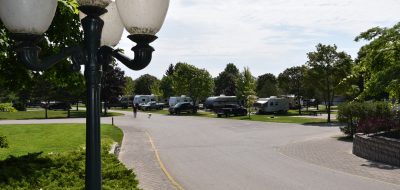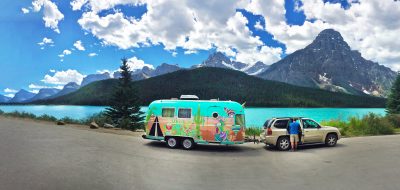The world may scratch its collective head when it comes to listing facts about Canada, but—at the very least—most know it’s a lot bigger than the spot they call home.
The Netherlands can easily fit into Lake Huron—with ample room to splash around.
There’s plenty to explore—Canada’s cities are new, dynamic, and evolving—but it’s the beauty of the massive forests, towering mountains, pristine lakes, and the land’s sheer breadth that enthralls many visitors.
This year marks the 100th anniversary of Parks Canada and Alan Latourelle, chief executive officer of the Parks Canada Agency, is inviting visitors from around the world—to enjoy the nation’s 42 national parks, 167 national historic sites, including nine canals, and four national marine conservation areas that stretch from British Columbia on the West Coast to Newfoundland on the East.
“Canada! We have more square feet of awesomeness per person than any other nation on Earth,” the beer commercial shouted over and over during last year’s Vancouver Olympics Games, to a steady backdrop of national park scenes. And the locals all raised their glasses, for Canadians love their national parks.
Much of the development of Parks Canada has taken place during the past two decades, and the intent of the parks system has expanded to embrace more and more land in the name of conservation—not necessarily visitation.
Today, some of the parks are home to animals which have become very rare or endangered in most parts of their natural range. For example, Elk Island National Park in Alberta is home to a genetically pure herd of rare wood bison. In March 2011, 30 of these animals were shipped to Russia. And most of us know about the transfer of grey wolves from Jasper to Yellowstone National Park.
Parks Canada has have restored bison and the black-footed ferret thought to be extinct, into Grasslands National Park in Saskatchewan.
The largest park is the Wood Buffalo National Park that stretches across Alberta and the Northwest Territories. At 17,000 square miles, it’s about the size of New Jersey, Delaware, and Connecticut, combined.
The smallest park is the 3.4-square-mile St. Lawrence Islands National Park in Ontario. The most visited park in Canada in 2010, not surprisingly, was Banff, with a whopping 3,132,086 visitors—and over 3 million cameras. On the other hand, Quttinirpaaq on Ellesmere Island had just two visitors. That’s a lot of per-person space, as the park measures 14,585 square miles. And about a dozen visitors found their way to Tutktut Nogait National Park, which is about 105 miles north of the Arctic Circle.
As Parks Canada celebrates its centennial, it also faces challenges.
Eight out of 10 Canadians now live in urban centers, and a growing number have never visited a national park.
In the last 10 years, there has been a decline in attendance at the parks. In 2001, 22.4 million people visited the parks, compared with 20.7 million last year.
The agency has begun to address that decline with new advertising campaigns.
The organization has a lot planned to help celebrate the centennial including two days—July 1 and 16—that will offer free, one-day admission to all parks and historic sites.
A Famous Forts Weekend will be held from August 19 to 21 featuring festivities at many of the forts under the agency’s umbrella. The weekend will feature music, dancing, food, and—of course—the signature 100-gun salute.
My Parks Pass, a Canada-wide program, will provide all Grade 8 students free access (for one year) to any national park, national historic site, or national marine conservation area administered by Parks Canada.
Considered an international leader, the agency is celebrating successes at the same time as it works to attract a new generation of Canadians.
Some citizenship ceremonies take place in national parks and historic sites to introduce new Canadians to them.
“How can we continue to have our places be meaningful and really have Canadians connect to them?” asks Campbell, “That’s our biggest challenge.”
Parks Canada is working on nine new parks. The goal is to represent Canada’s 39 natural regions through the parks system; to capture a comprehensive representation of Canada’s flora, fauna and geology.
Happy Birthday, Parks Canada!
National Parks by Province/Territory
Alberta: 4.5*
Ontario: 5
Northwest Territories: 3.5*
Nunavut: 4
Quebec: 3
Manitoba: 2
Nova Scotia: 2
Saskatchewan: 2
* Wood Buffalo National Park straddles the Alberta-Northwest Territories border






